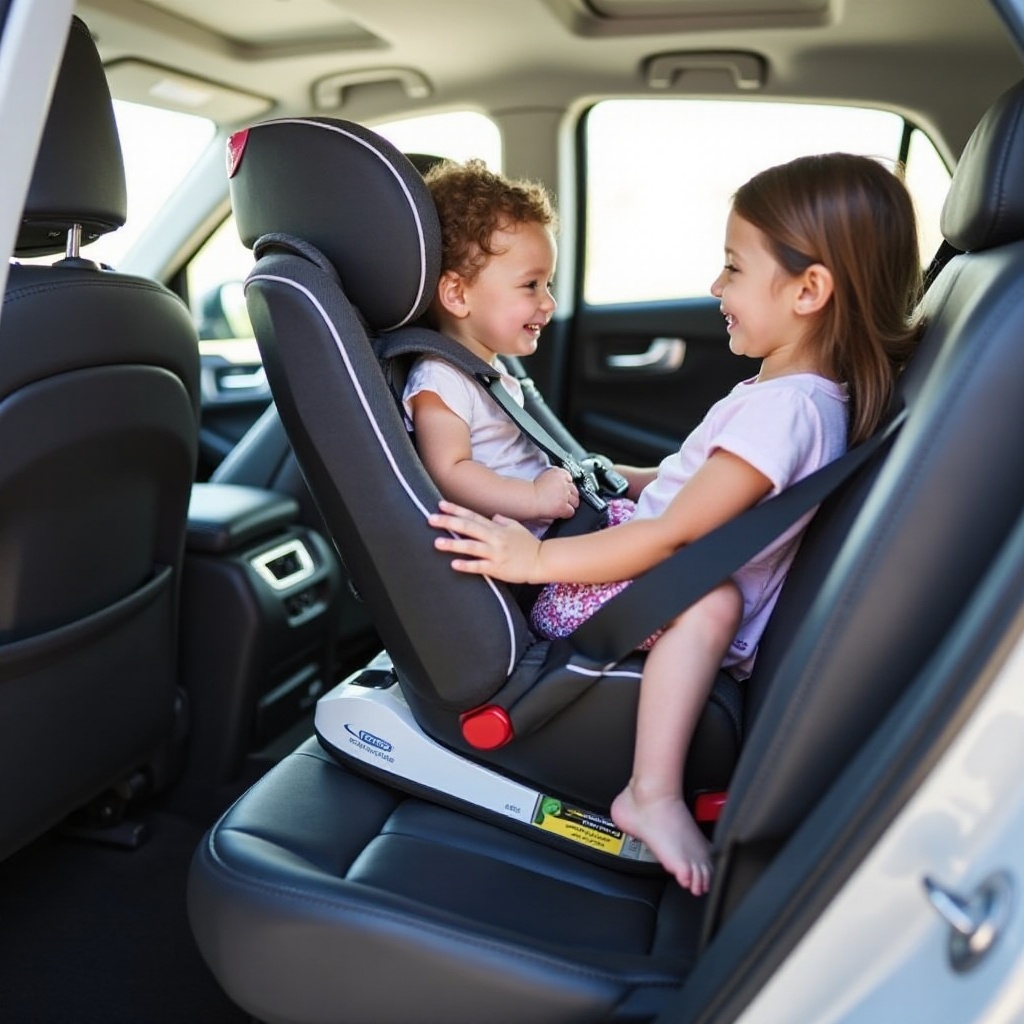Introduction
Ensuring your child’s safety during car rides is paramount for parents. Selecting the right booster seat is crucial for your child’s safety and comfort. Graco booster seats are renowned for their quality and reliability, making them a trusted choice among parents.
Understanding the weight requirements for Graco booster seats is essential for making informed decisions. This comprehensive guide will cover everything from weight specifications to choosing the best model for your child. We will explore the various features and safety aspects of Graco booster seats to help you choose wisely.

Why Weight Requirements are Important for Booster Seats
Weight requirements for booster seats are designed with your child’s safety in mind. Proper weight alignment ensures that the seatbelt or harness fits correctly, reducing the risk of injury during a collision.
Using a booster seat that meets the weight requirements ensures that the shoulder belt rests appropriately on the shoulder bone and the lap belt fits snugly across the upper thighs. An improperly fitting seat belt can result in severe injuries during an accident, such as abdominal or neck injuries.
Booster seats bridge the gap between car seats and car seat belts, making adherence to weight recommendations by manufacturers vital for your child’s secure ride.
Overview of Graco Booster Seats
Graco is a leading name in child safety seats, offering a range of booster seats designed to cater to various needs. Graco seats are known for their durability, innovative design, and incorporation of safety features tailored to different growth stages.
Graco booster seats come with adjustable headrests, harness systems, and side-impact protection. They are designed to grow with your child, maintaining a comfortable fit through continuous adjustments.
We will look into the specific weight requirements and features of three popular Graco models: the Graco TurboBooster, Graco Affix, and Graco Atlas.

Specific Graco Booster Seat Weight Requirements
Graco TurboBooster
The Graco TurboBooster is favored by parents for its reliable features and comfort.
- Weight Requirements: Suitable for children weighing between 40 and 100 pounds and standing between 43 to 57 inches tall.
- Key Features: Adjustable headrest, open-loop belt guides for proper seat belt positioning, and designed for comforting long trips.
Graco Affix
The Graco Affix is known for its unique safety and convenience features.
- Weight Requirements: Designed for children between 40 and 100 pounds and 43 to 57 inches tall.
- Key Features: Equipped with a one-hand, front-adjust LATCH system that secures the booster to the vehicle seat to enhance stability.
Graco Atlas
The Graco Atlas provides versatility by offering both a harness booster and a high-back booster mode.
- Weight Requirements: Accommodates children from 22 to 65 pounds with the harness and from 30 to 100 pounds in high-back booster mode.
- Key Features: Includes a five-point harness system, high adjustability, and built-in cup holders.
Safety and Features of Graco Booster Seats
Graco booster seats are engineered with numerous safety and comfort features.
Side-Impact Protection
Graco seats incorporate side-impact protection to safeguard your child during side collisions. The energy-absorbing materials and design contribute significantly to enhancing safety.
Harness Systems
Certain Graco models come with advanced harness systems like the five-point harness in the Graco Atlas, which provides added security by keeping your child securely in place.
Comfort Features
Comfort is paramount for long car rides. Graco booster seats feature padded armrests, cushioned seats, and adjustable headrests to ensure maximum comfort. Added benefits include built-in cup holders and easy-to-clean materials.

Tips for Choosing the Right Graco Booster Seat
Selecting the right Graco booster seat involves considering several factors.
Weighing Your Child Properly
Accurately weighing your child is critical. Use a scale to ensure their weight falls within the specified range of the booster seat. Always check the manufacturer’s guidelines for model-specific requirements.
Transition Phases for Booster Seats
Knowing when to transition your child from one seat phase to another is crucial. Graco offers models that grow with your child, ensuring safe transitions from harness to booster mode.
Installation and Maintenance
Proper installation is vital for safety. Follow the user manual and utilize the LATCH system if available. Regular maintenance, including checking for wear and outdated components, can prolong the seat’s life and maintain safety standards.
Conclusion
Graco booster seats blend safety, comfort, and convenience, catering to your growing child’s needs. Understanding each model’s weight requirements ensures that your child uses the seat correctly and safely. Whether you opt for the Graco TurboBooster, Graco Affix, or the versatile Graco Atlas, there is a Graco booster seat to meet your child’s specific needs.
Choosing the right booster seat involves knowing your child’s weight and height, adhering to installation guidelines, and maintaining the seat regularly. With this knowledge, you can confidently ensure your child’s safety on every journey.
Frequently Asked Questions
What is the minimum weight for using a Graco booster seat?
The minimum weight ranges start from around 22 pounds for models like the Graco Atlas in harness mode, while many high-back booster models start at 40 pounds.
When should I transition my child from a highchair to a booster seat?
Children typically move from a highchair to a booster seat when they can sit up unassisted and weigh between 30 and 40 pounds, depending on specific booster seat requirements.
How do I install a Graco booster seat?
Always refer to the user manual for installation instructions. Generally, it involves positioning the seat correctly, using the LATCH system or seatbelt, and ensuring that the seat belt or harness fits snugly.
